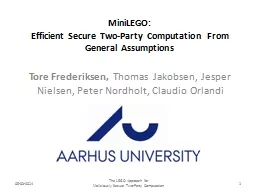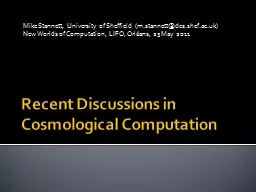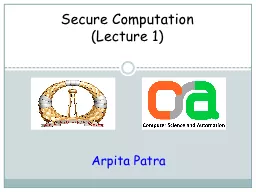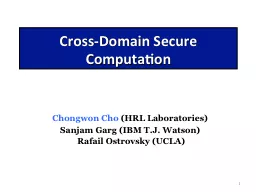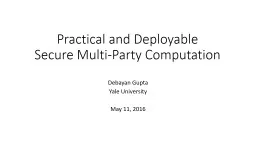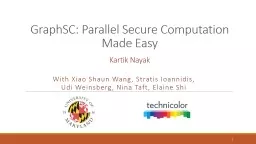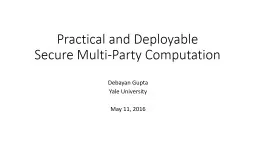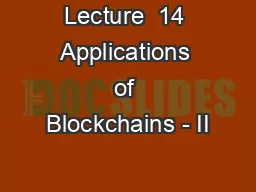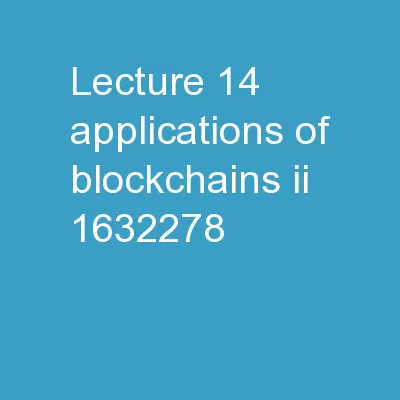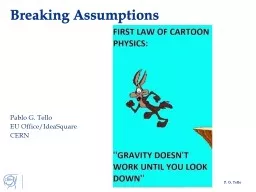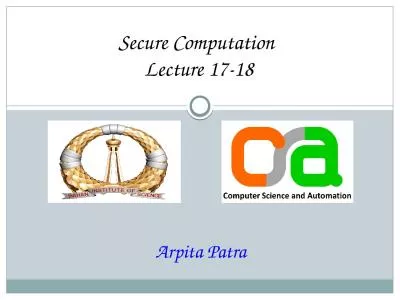PPT-MiniLEGO : Efficient Secure Two-Party Computation From General Assumptions
Author : danika-pritchard | Published Date : 2018-10-28
Tore Frederiksen Thomas Jakobsen Jesper Nielsen Peter Nordholt Claudio Orlandi 27082016 The LEGO Approach for Maliciously Secure TwoParty Computation 1 What
Presentation Embed Code
Download Presentation
Download Presentation The PPT/PDF document "MiniLEGO : Efficient Secure Two-Party Co..." is the property of its rightful owner. Permission is granted to download and print the materials on this website for personal, non-commercial use only, and to display it on your personal computer provided you do not modify the materials and that you retain all copyright notices contained in the materials. By downloading content from our website, you accept the terms of this agreement.
MiniLEGO : Efficient Secure Two-Party Computation From General Assumptions: Transcript
Download Rules Of Document
"MiniLEGO : Efficient Secure Two-Party Computation From General Assumptions"The content belongs to its owner. You may download and print it for personal use, without modification, and keep all copyright notices. By downloading, you agree to these terms.
Related Documents

